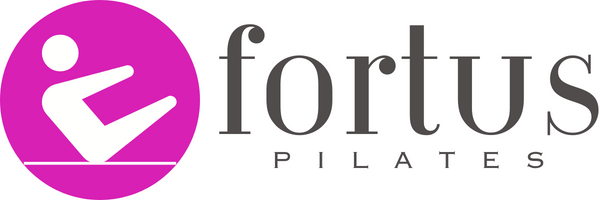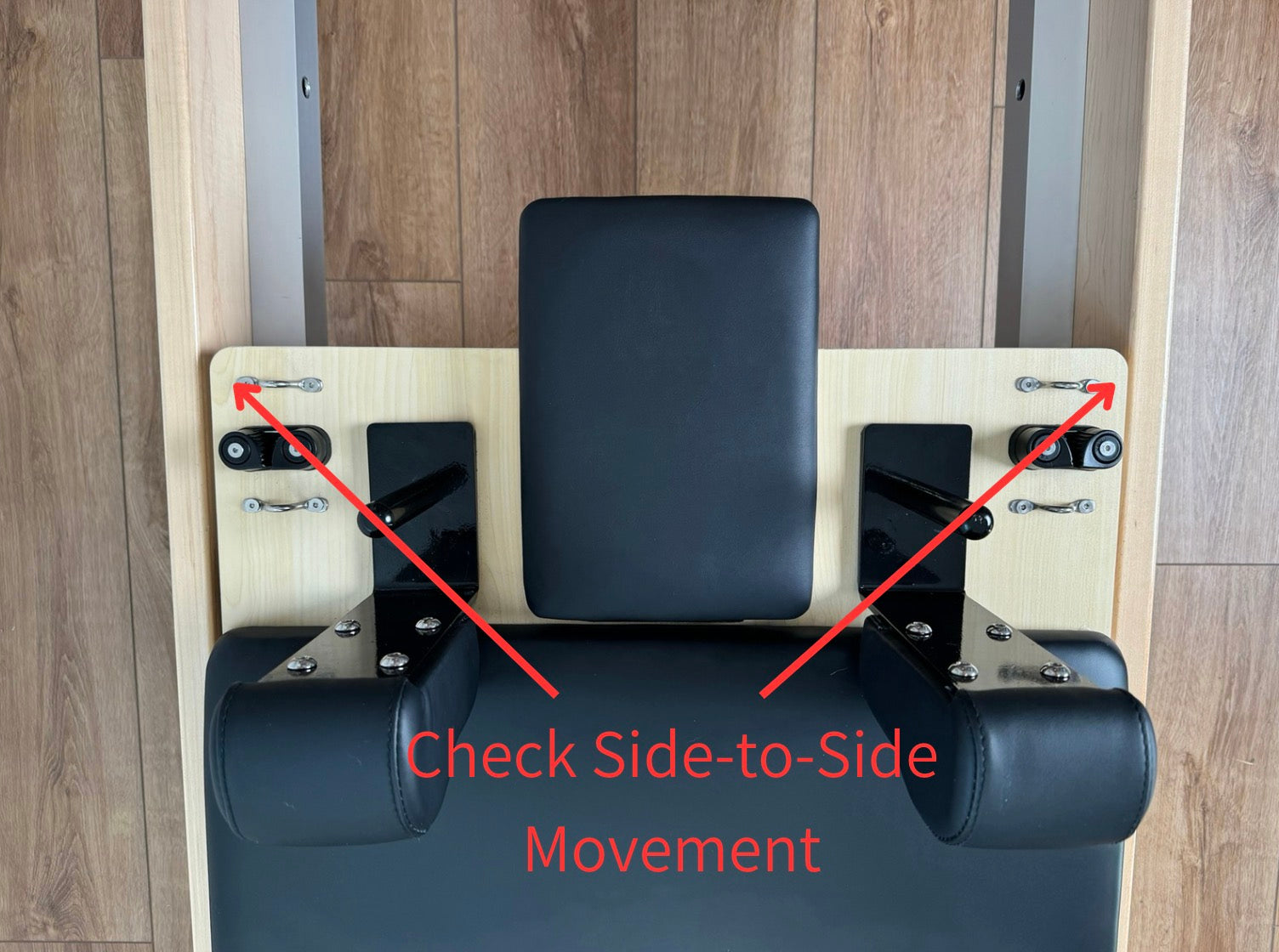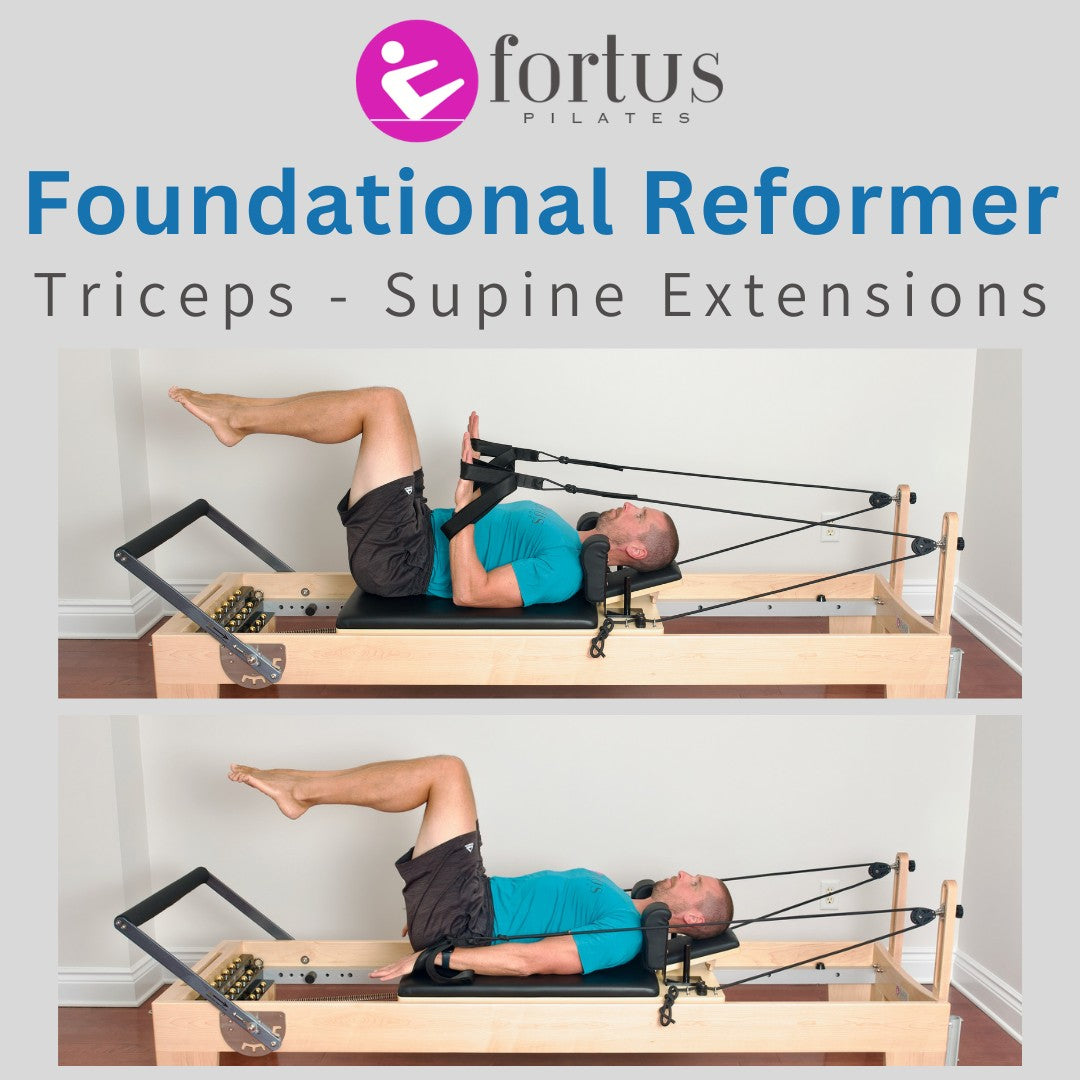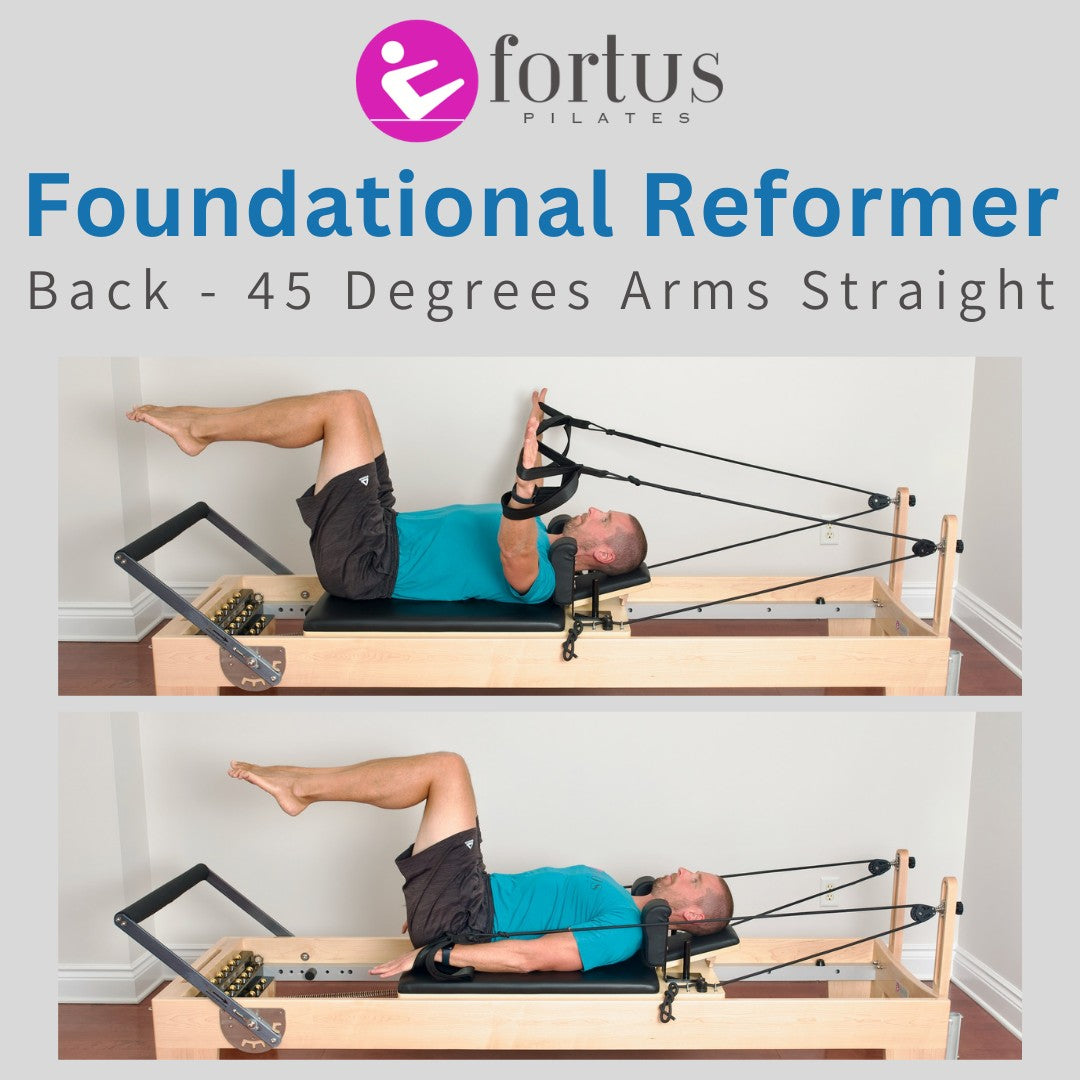
Summary
The Pilates Reformer One Hundred focuses on the entire abdominals and hip flexors. This exercise involves maintaining constant abdominal contraction for a prolonged period. In addition, this exercise works several secondary muscles including the quadriceps, lats, and pec major, as well as scapular stabilizers.
Purpose
- Warm up the entire body.
- Strengthen abdominals and hip flexors, with a focus on endurance of these muscle groups.
- Improve stability of core and scapula.
Reformer Setup
- Footbar down.
- Spring tension moderate.
- Loop length and carriage stoppers adjusted to ensure load fully supported by straps during exercise.
Starting Position
- Supine on the carriage, tailbone centered, shoulders slightly away from shoulder rests to ensure no interference from the shoulder rests during abdominal contraction.
- Elbows bent beside body, loops held evenly in both hands and under tension, palms facing feet. Scapula stable (no shrugging of shoulders).
- Legs extended straight, slightly elevated, and adducted (squeezing together).
- Feet pointed, pressing together, and parallel. Modification is to have feet in small V.

Starting position.
Execution (100 Repetitions)
- On exhale, perform the following three movements simultaneously:
One: Roll up contracting abdominals until lumbar spine lies flat on carriage. Shoulders should be elevated, scapula remains stabilized.
Two: Legs lift remaining in full extension and adducted (pressing together). Legs should be as low as possible while maintaining lumbar spine flat on carraige. Typically legs will need to be at eye level or higher to maintain proper positioning of lumbar spine.
Three: Straighten arms parallel to carriage with hands flat and fingers pointing straight ahead. - On inhale, slowly count to five while evenly pumping arms up and down five times. Nothing moves except the arms. Abdominals and legs remain full engaged and completed fixed. Arms move up and down around 8-12 inches. Carriage does not move.
- On exhale, slowly count to five while continuing to pump arms up and down.
- After a total of 100 arm pumps, return to starting position by performing the following three movements simultaneously:
One: Roll down releasing abdominals.
Two: Lower legs.
Three: Bend elbows to return carriage to starting position.

Position 1. Start.

Position 2. Lower pulse position.

Position 3. Upper pulse position. 100 repetitions moving between positions 2 and 3.

Position 4. Return.
Common Mistakes
- Upper body moves during arm pumps. The upper body should stay fixed in space throughout the 100 repetitions.
- Too little abdominal contraction and too much flexion of the cervical spine. The shoulders should lift off the carriage as a result of the abdominal contraction. Neck should be comfortably curved without chin jamming into chest.
- The carriage moves during repetitions. The carriage should remain stationary.
- Too little range of motion during the arm pump. The arm should range from level with the shoulders to 8-12 inches above shoulder.
- Dropping hands down to carriage. The bottom of the pump should be level with the shoulders, which will be substantially higher than the height of the carriage, depending on the amount of abdominal contraction.
- Focus on extension and adduction of the legs is lost. If performing the exercise with the feet in small V, the small V is lost. Keep legs active and engaged throughout the entire sequence.
- Arms bend during pumping. Keep arms perfectly straight, palms facing down.
Modifications & Variations
- For beginners, keep shoulders and head lowered onto carriage while focussing on maintaining a consistent abdominal contraction, scalpular engagement, and controlled pumping of the arms with legs elevated at 45 degrees.
- Use the shoulder rest to partially support the upper body.
- Perform the exercise without the straps.
- Place a ball between thighs to increase focus on the adduction of legs.
- Alternate between legs extended and legs in table top. Alternating can be performed every 5 reps, or less frequently as desired.
- Maintain legs in tabletop position for entire sequence to relieve pressure on hip flexors.
- Alternate arm pumping with criss-crossing of legs. Change between arm pumping and leg criss-crossing at regular intervals of 10 or 20.




